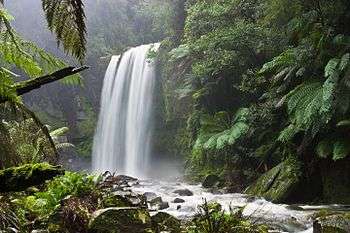Conservation in the Republic of Ireland
Conservation in the Republic of Ireland has been a contentious issue, with debates hampering its progress since the 1960s.[1][2] Concrete initiatives are also driven by European Union (EU) environmental policies, particularly the EU environmental law, which - as a member - the country is committed to adopt and implement. [1]
Background
One of the earliest conservation initiatives involved Ireland's hosting of the international wildlife seminar in 1970, which is part of its contribution to the European Conservation Year. This seminar played a role in the creation of the Forest and Wildlife Service, which was created in response to the seminar's recommendation for a centralized conservation agency in Northern Ireland.[3] One of the primary functions of the agency involves the identification of sites for conservation purposes.
Historical conservation, however, has been in place longer in the Republic of Ireland. As early as the 1930s, a national policy has been adopted in the form of the National Monuments Act, which established preservation orders, listed national monuments, and outlined standards, prohibitions, and regulations of archaeological objects.[4] By 2003, historical conservation was subsumed under the Department of Environment, Heritage and Local Government.
Not all areas of conservation receive the same level of attention from central and government however. For example, industrial heritage still does not benefit from a national policy unlike in most other EU countries. This makes applications for funding from EU sources more difficult as such funding is required to integrate with national and local approaches to preserving and leveraging important cultural assets.
Areas
Governmental
Non-governmental
- An Taisce
- Bilberry Goats
- Environmental Conservation Organisation
- Irish Peatland Conservation Council
- The Industrial Heritage Association of Ireland
See also
- Environment of the Republic of Ireland
- List of conservation issues
- List of conservation topics
References
- 1 2 Coakley, John; Gallagher, Michael (2005). Politics in the Republic of Ireland. New York: Routledge. p. 452. ISBN 0415280664.
- ↑ Norris, Michelle; Declan, Redmond (2005). Housing Contemporary Ireland: Policy, Society and Shelter. Dublin: Springer. p. 344. ISBN 1402056737.
- ↑ Hutchinson, Clive (2010). Birds in Ireland. Calton: T & AD Poyser. p. 37. ISBN 9781408137017.
- ↑ Jameson, John; Eogan, James (2012). Training and Practice for Modern Day Archaeologists. New York: Springer. p. 203. ISBN 9781461455295.
